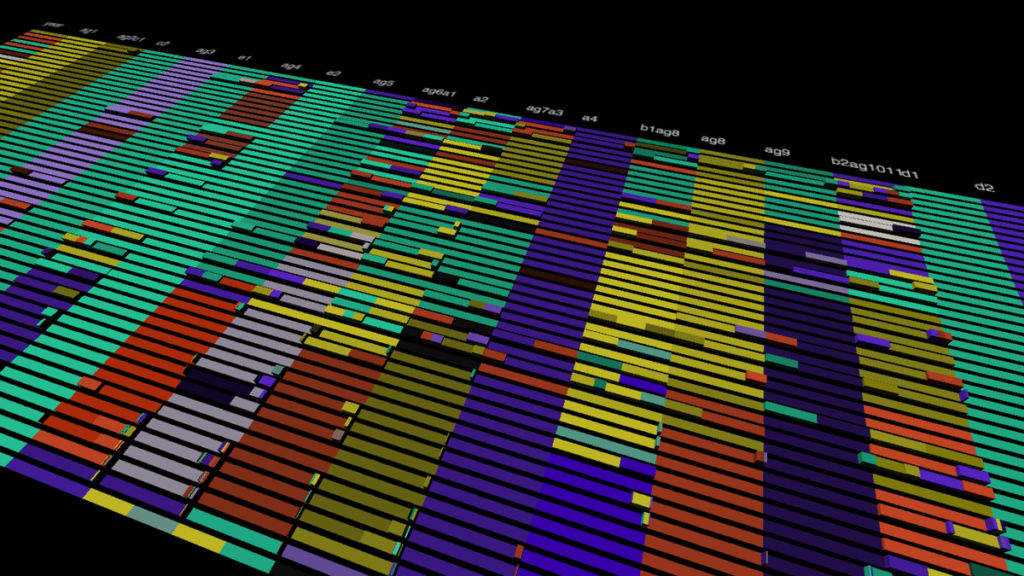In the last two decades, the landscape of genomics and the utility of genetic information in healthcare have both undergone a revolutionary transformation, marked by the increasing affordability and accessibility of personal genomes. What was once the exclusive preserve of scientific research and intellectual pursuit, limited to a few major centres across the world, has today turned mainstream, offering to empower individuals with unprecedented insights into their own genetic makeup. The lower costs associated with genome sequencing technologies – particularly with advancements in next-generation sequencing – has played a pivotal role in this democratisation.
This accessibility has catalysed large-scale initiatives and population-wide projects that try to harness the power of genetic data to improve healthcare. The convergence of technology and biology has also paved the way for more population-scale whole genome sequencing endeavours. These initiatives plan to decipher the genetic codes of diverse populations, promising a deeper understanding of the genetic foundations of diseases and cures to them.
Personal genome sequencing in particular can help us tailor treatments to individual genetic profiles and predict individuals’ susceptibility to specific diseases. Incidental findings Genetic testing has significantly improved in the last decade. Many tests can be performed today not on single genes but on combinations of them.
For example, whole exome sequencing sequences around 1% of the genome, encompassing several protein-coding regions. Such tests examine specific portions or the entirety of the genome, and their results can be used to identify genetic diseases, conduct pharmacogenomic assessments, assist in carrier screening and genetic counselling, and map one’s ancestry. In many instances, the use of comprehensive tests can also reveal genetic abnormalities that extend beyond the initial purpose or indication of a given test.
Such findings are called incidental or secondary findings. Of course, not all incidental findings will be useful to an individual – a fact that has sparked some debate among medical researchers whether individuals should be able to access such results. Incidental and actionable In 2013, the American College of Medical Genetics and Genomics (ACMG) put together a recommendation for laboratories that performed whole exome or whole genome sequencing.
The recommendation was that incidental findings that pertained certain conditions and diseases could be disclosed to the individual because that could help them. It followed year-long consultations with various stakeholders. These conditions included genetic cancer syndromes (including familial breast and ovarian cancers), familial gastrointestinal cancers, and common cardiac and metabolic diseases.
The ACMG has continued to expand this list. The latest version of the list (sf. 3.
2) was published in June 2023: it included 97 disorders and 81 genes spanning cardiovascular and metabolic disorders and cancer. Separately, researchers have also been analysing the prevalence of incidental and actionable genetic information – via population-scale genome-sequencing programmes currently underway in many countries – in their respective populations. Various estimates suggest the prevalence of such information ranges from 1% to 3% among different populations as well as different versions of the genes in the secondary findings.
In the Indian population itself, such studies have revealed two prevalent but under-diagnosed diseases – cardiac channelopathies and familial hypercholesterolemia . Their prevalence is approximately 1 in 100 and 1 in 150, respectively. Do incidental findings really matter? The incidental findings included in the ACMG list are accompanied by significant evidence on the medical benefits of disclosure.
As a result, people who participate in genome-sequencing programmes that look for the genes associated with these disorders prefer to be able to access the results. This said, there has been limited evidence on the population-scale impact of such incidental findings. Iceland has been at the centre of genetics research due to the unique historical demographic isolation of its population as well as because it initiated a large population-level genome-sequencing programme early, led by deCODE Genetics.
Specifically, by combining population-scale genomic data with comprehensive genealogical and medical records, the latter initiative has contributed significantly to the identification of genetic variants associated with a number of diseases, enabling insights into disease susceptibility and then personalised medicine. On November 9 this year, researchers in Iceland published a paper in the New England Journal of Medicine by researchers in which they reported trying to address whether these incidental findings could be associated with the lifespan of an individual! Researchers pored through more than 57,000 whole genome sequences obtained from a population in Iceland. Based on their analysis, they suggested that approximately 1 in 25 individuals in the cohort could have actionable and incidental genetic variants – and acting on which could improve their lifespan.
Individuals who had an actionable genetic finding also had a significantly lower lifespan of one year on average compared to those who didn’t. However, 10% of those with an actionable variant died much earlier than those who didn’t have that variant. Adjusted for disease type, the researchers reported that individuals with cancer-related actionable genotypes lived three fewer years on average than those who didn’t.
They also found that 10% of individuals in this group died eight years earlier on average. They associated this difference largely with whether the latter set of individuals carried the BRCA1 and the BRCA2 genes, mutations in which can increase the risk of breast cancer. At a time when genome-sequencing is swiftly becoming both more accessible and more affordable, the prospect of both regular population-scale sequencing programmes and newborn sequencing initiatives is quite real.
When such programmes are implemented widely, a substantial fraction of the population will stand to gain invaluable medically actionable insights. Armed with them, individuals but also healthcare systems can proactively take precise and meaningful measures to treat and, importantly, prevent diseases effectively. The authors are senior consultants at Vishwanath Cancer Care Foundation and adjunct professors at the Indian Institute of Technology, Kanpur.
COMMents SHARE Copy link Email Facebook Twitter Telegram LinkedIn WhatsApp Reddit The Hindu Explains / genetics / disease / disease prevention.
From: thehindu
URL: https://www.thehindu.com/sci-tech/science/personal-genome-sequencing-secondary-findings-disclosure-explained/article67692308.ece
